Growing up, crabs1 were not something that were even remotely on my culinary radar. Despite living thirty minutes or so from the Gulf Coast, we didn’t eat a lot of seafood in general. Sure, I’d have tilapia, or maybe grouper, every so often when we’d go out to eat2, but for the most part, we were a land-based type of family.
The first time I ate crabs, really ate crabs3, was with Mrs. CWD’s family shortly after we started dating. It wasn’t pretty. I was given a one crab grace period, with instructions, and then after that, I was on my own. I’m lucky I was allowed back after my performance, but, over past decade or so, I’ve managed to get a little better, and now, I think, maybe, I can hold my own4.
Somewhere, I’m sure, there is a treatise on the ritual of eating crabs5. There’s a certain amount of dogma involved: bounty spread across the table, the mallets and knives, stinging lips and fingers, the tedium of picking, the delight of eating. One could get awfully philosophical about it, if one really wanted. That’s not the purpose of this recipe, though. Today, we’re just concerned about good food.
Crabs are not a casual weeknight meal. Though I’m sure some do, I would never recommend eating crabs alone, because it’s such a communal experience. Besides taking a proverbial village to prepare, part of what makes it so much fun is the banter around the table, the joy of eating outside, and the actual payoff of getting some meat from all effort involved6. If you have the occasion to, I’d recommend giving it a shot7.
Ed. Note: I am going to share the instructions as given to me verbatim by my father-in-law. Any issues with clarity, consistency, taste, or timing, I encourage you to reach out to him via the comment section. However, I will addend the recipe with footnotes, so have no fear.
Any issues with the photos, please reach out to my creative assistants, the Aunties CWD.
“The recipe is very simple. You start with two cups of water, two cups of white vinegar, and half a beer. Then, add a little seasoning — one-third cup8. Let this steam for… oh, until it’s steaming. Then, add the crabs9. You know how to cook them, about 30-35 minutes depending on how many you have10. That’s it11!”
Not being from a traditional crab-eating lineage, I’m sure I’m missing some pertinent information or color here — so for that, I apologize. Please leave a comment below if you have some crustacean knowledge to share. Also welcome are tips, tricks, and/or recommendations for a low country boil variety of seafood bonanza.
If all goes according to plan, this time tomorrow, we’ll be in the midst of hauling in some serious flounder on a fishing excursion. If we’re lucky, we’ll be enjoying fresh fish tacos for dinner. If we’re unlucky, well, we’ll probably still have fish tacos, just maybe not so fresh. Let’s hope they’re bitting!
As always, enjoy the weekend. We’re kicking into fall gear, so take advantage of the waning light — it’ll be stew season before you know it.
When I say crabs, and generally across the mid-Atlantic, I mean blue crabs (Callinectes sapidus — the “beautiful, savory swimmer”). We did, every so often, have stone crab (claws only) or Alaskan king crab, but mostly that was my parents eating them, when given to them as a gift.
Looking at you, Bahama Breeze.
Crab cakes, etc., don’t count.
I’m not even going to attempt to describe how to pick a crab. That’s a lesson you can only learn through trial and error and a lot of familial humiliation.
I think it was in Brad Leone’s Field Notes for a Food Adventure, but my copy is at home so I can’t confirm.
In prepping and in picking.
Make sure the crabs you get come from a good fishmonger, are alive when you get them, and are as fresh as possible. This is generally good advice for getting any type of meat or produce, come to think of it — excepting, of course, most things you don’t want to buy alive.
What he means here, is you’ll add this to a crab steamer pot and bring the liquid to a boil before reducing to a simmer.
You add the crabs to the steamer part of the pot — not directly in the water. This isn’t a crab boil! Before you add the crabs to the pot, check to make sure they are alive, rinse them with some water, and dust them with crab seasoning. It’s imperative that you use JO Seasoning here, and I won’t vouch or endorse the use of anything else, including Old Bay.
Like a lobster, your crabs are done when they turn a deep red.
I recommend, while the crabs are steaming, that you cover whatever eating surface you’ll be using with a layer of contractor trash bags and then a layer of either butcher (or craft paper) or newspapers. Picking crabs can be a messy process, and this will make the cleanup infinitely easier.


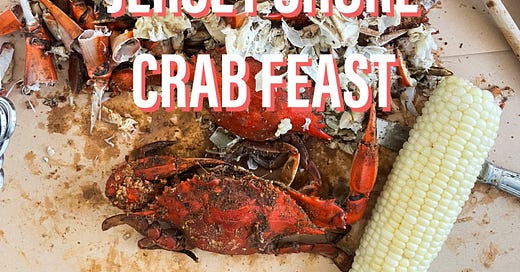



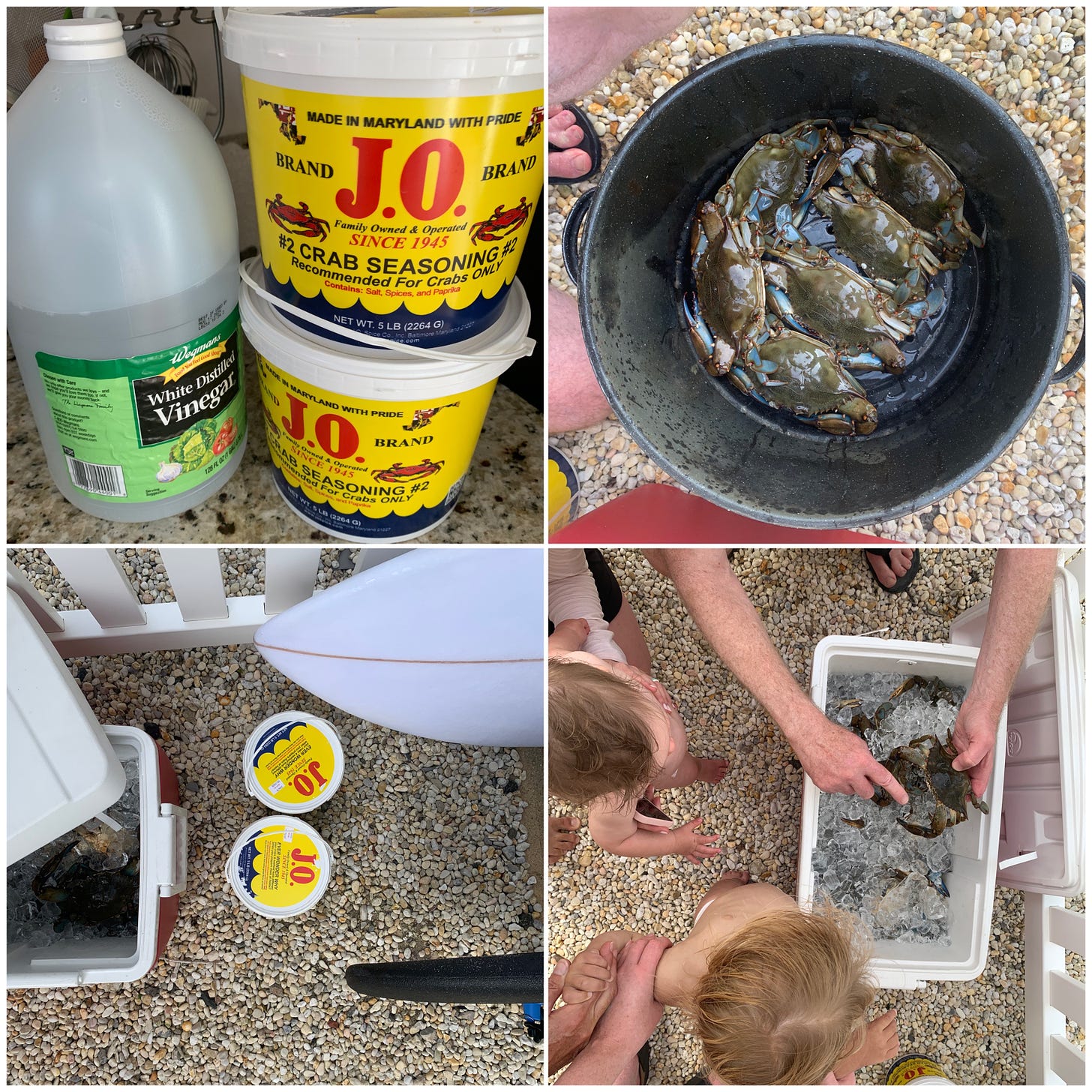
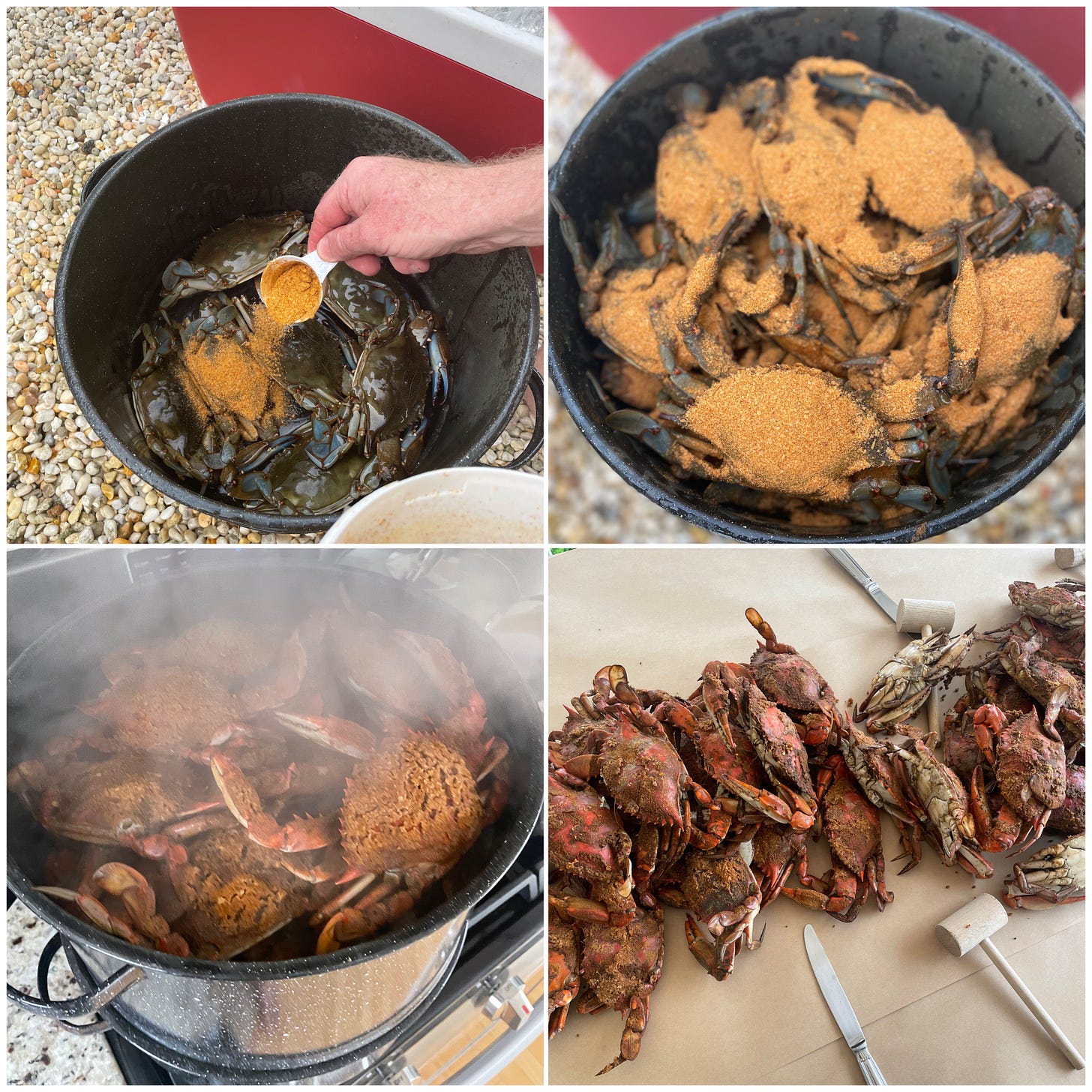
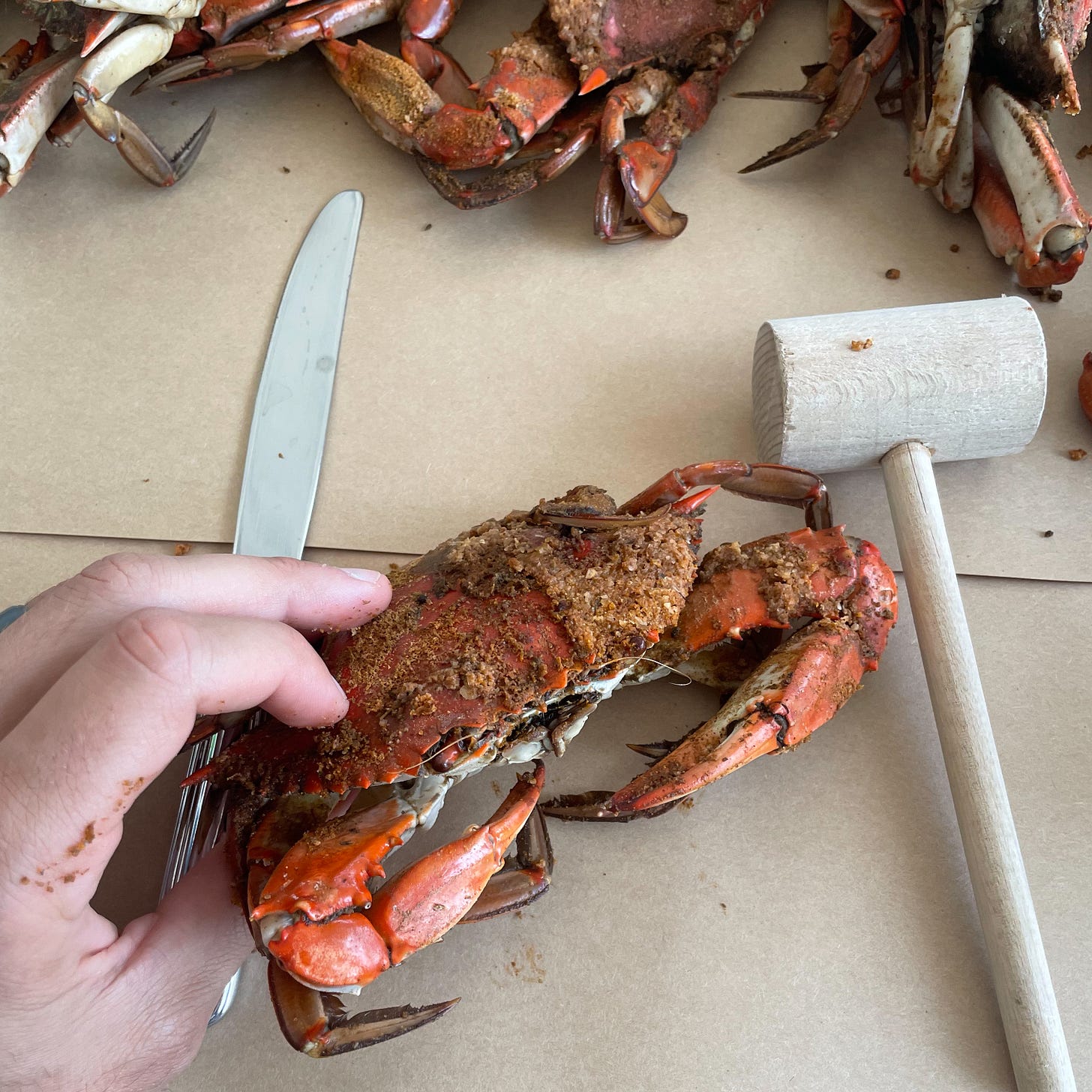
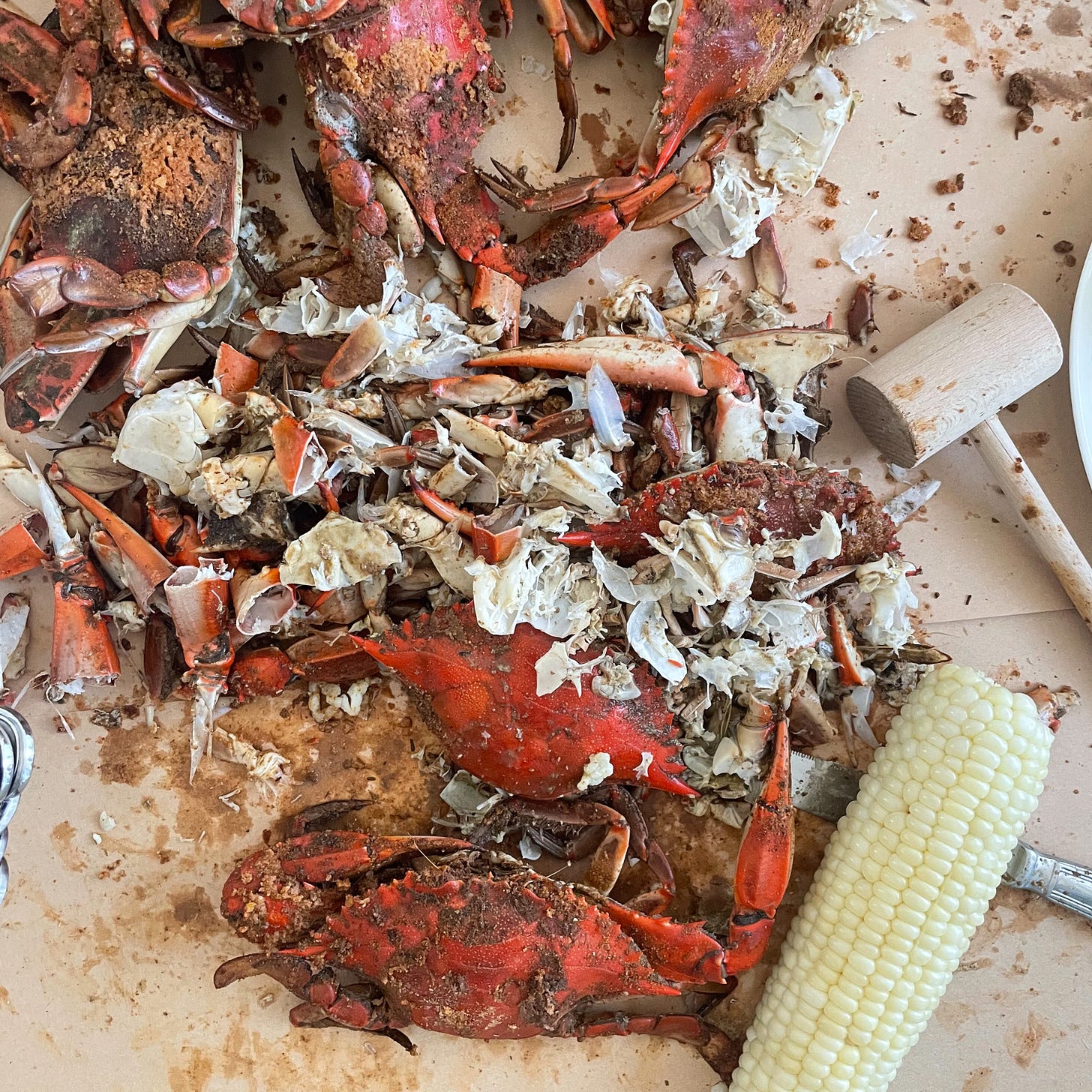
The photos are great and make everything so easy to follow. Can't say I'll be trying this recipe anytime soon, but I've been enlightened!
Loved the post this week. My deepest regret is that Dad and I did not properly expose you to this culinary experience at an early age, but you are a quick, perceptive learner, so nothing lost!